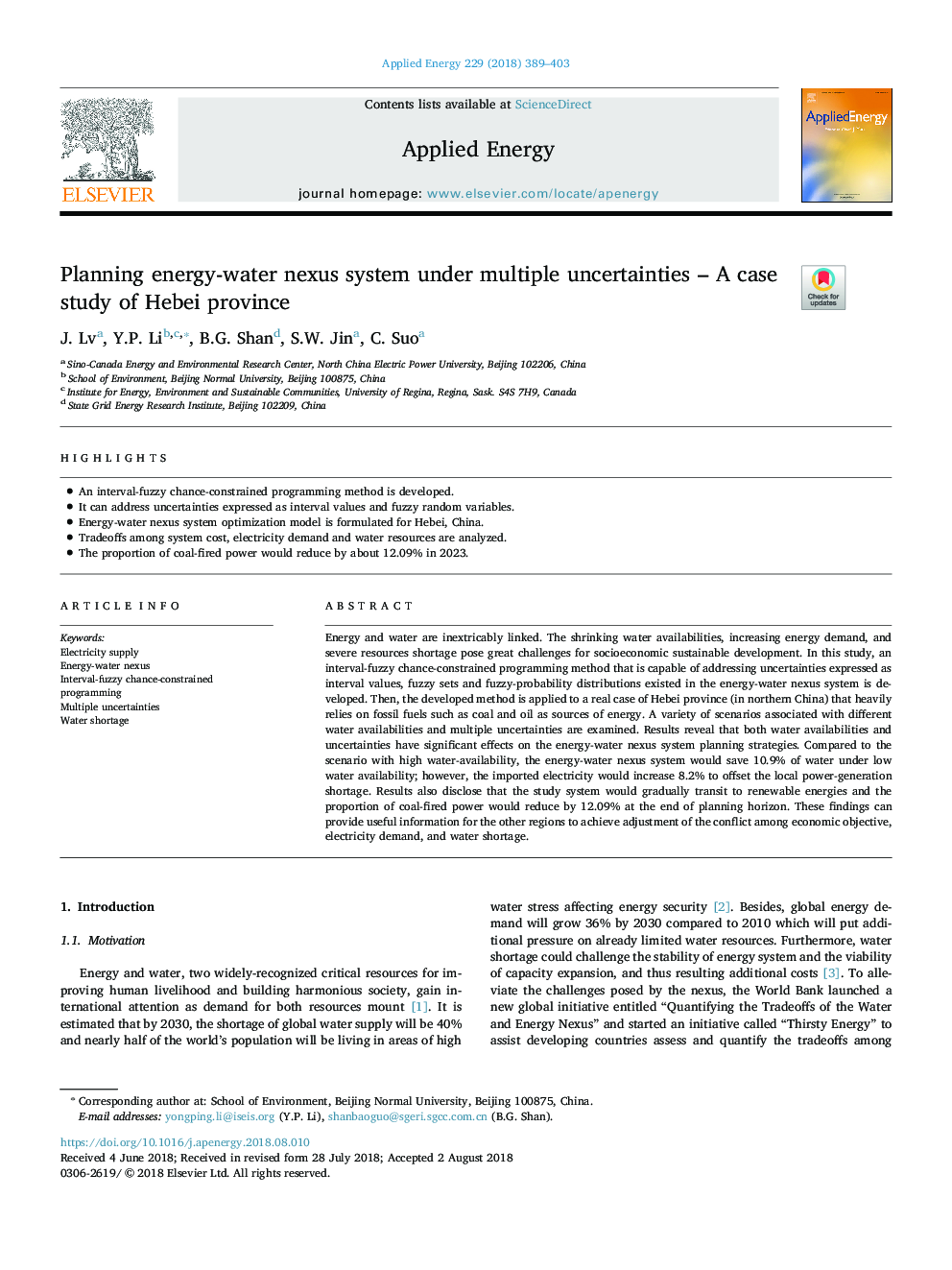| Article ID | Journal | Published Year | Pages | File Type |
|---|---|---|---|---|
| 6679653 | Applied Energy | 2018 | 15 Pages |
Abstract
Energy and water are inextricably linked. The shrinking water availabilities, increasing energy demand, and severe resources shortage pose great challenges for socioeconomic sustainable development. In this study, an interval-fuzzy chance-constrained programming method that is capable of addressing uncertainties expressed as interval values, fuzzy sets and fuzzy-probability distributions existed in the energy-water nexus system is developed. Then, the developed method is applied to a real case of Hebei province (in northern China) that heavily relies on fossil fuels such as coal and oil as sources of energy. A variety of scenarios associated with different water availabilities and multiple uncertainties are examined. Results reveal that both water availabilities and uncertainties have significant effects on the energy-water nexus system planning strategies. Compared to the scenario with high water-availability, the energy-water nexus system would save 10.9% of water under low water availability; however, the imported electricity would increase 8.2% to offset the local power-generation shortage. Results also disclose that the study system would gradually transit to renewable energies and the proportion of coal-fired power would reduce by 12.09% at the end of planning horizon. These findings can provide useful information for the other regions to achieve adjustment of the conflict among economic objective, electricity demand, and water shortage.
Related Topics
Physical Sciences and Engineering
Energy
Energy Engineering and Power Technology
Authors
J. Lv, Y.P. Li, B.G. Shan, S.W. Jin, C. Suo,
